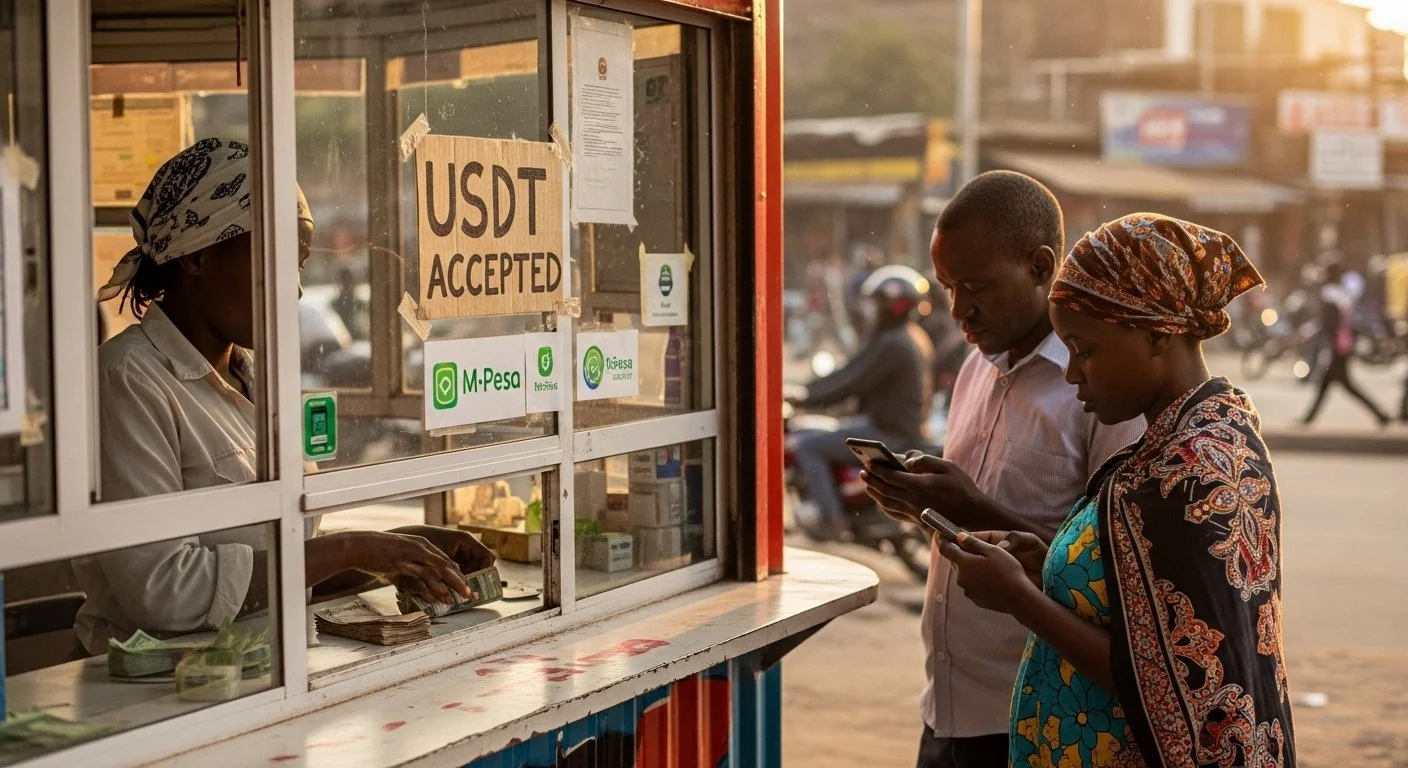The Ghost Exchange: What Garantex Tells Us About Sanctions in the Age of Crypto
Investigators say sanctioned Russian exchange Garantex continues to move funds through global crypto and payment networks despite being blacklisted.
When Sanctions Go Digital
When the Russian crypto exchange Garantex was sanctioned in 2022 for facilitating billions in illicit transfers, it was meant to be a decisive victory for regulators. Its domains were frozen, its website taken down, and its name added to the global sanctions lists.
But this month, a new investigation by Transparency International revealed a different story: Garantex never really disappeared.
Instead, it migrated to the encrypted world of Telegram, where it continues to process payments through bots, dealers, and proxy wallets — enabling cross-border crypto transfers hidden in plain sight on the blockchain.
The case illustrates a growing global blind spot: how sanctioned crypto exchanges continue trading despite enforcement bans.
The Illusion of Enforcement
In the traditional banking system, sanctions are simple: freeze the account, block the transfer, and stop the flow.
But crypto has rewritten that playbook.
Despite being blacklisted by the U.S. Treasury and removed from major exchanges, Garantex continues to move funds through peer-to-peer networks. No banks, no SWIFT codes, no intermediaries — just wallet addresses and encrypted messages.
This means sanctioned entities can still operate, bypassing enforcement with nothing more than a phone and an internet connection.
It’s not that sanctions no longer matter — it’s that they now require an entirely new kind of visibility.
Telegram-based marketplaces have become informal hubs for peer-to-peer crypto trading after exchanges like Garantex were sanctioned.
How the Money Moves
Transparency International’s researchers found that Garantex’s users now trade stablecoins — mostly USDT — through informal Telegram marketplaces. Dealers convert digital assets to cash and back again, often across multiple blockchains and jurisdictions.
The pattern is familiar to compliance teams:
Off-chain communication conceals counterparties.
Cross-chain transfers blur transaction origins.
Mixers and tumblers disguise movement and ownership.
This is the modern version of hawala — fast, informal, and global — except it leaves behind a digital trail that few institutions are equipped to follow.
Why This Matters Beyond Moscow
Garantex isn’t just a Russian story.
It’s a preview of what’s coming everywhere crypto meets cash.
In Africa, Asia, and the Middle East, digital currencies are rapidly becoming part of everyday finance — from cross-border remittances to savings and small-business payments.
But the same networks that power inclusion can also enable illicit flows if left unmonitored.
Until recently, even major global banks lacked tools to trace crypto-to-cash flows, leaving compliance teams effectively blind to this growing segment of risk.
Today, regulators in Kenya, Nigeria, Malaysia, and Indonesia are all revising AML frameworks to match new FATF guidance on virtual assets — focusing on wallet tracing, peer-to-peer risk, and cross-chain analytics.
It’s no longer enough to screen names.
Compliance visibility must extend to wallets, tokens, and digital behaviour.
Financial-crime teams worldwide are racing to trace wallet links between sanctioned entities and legitimate payment flows.
Seeing What Others Can’t
Traditional sanctions screening stops at names and accounts. But crypto demands a different lens — one that can trace risk across blockchains and into fiat channels.
That’s why Anqa Compliance built Crypto Investigator — a next-generation investigation tool that lets financial institutions follow digital money with the same confidence they expect from traditional banking systems.
Crypto Investigator enables teams to:
Trace wallets across multiple blockchains (Bitcoin, Ethereum, USDT, and more)
Detect connections to sanctioned addresses, mixing services, and DeFi protocols
Visualize transaction networks several hops deep to uncover hidden networks
Generate audit-ready investigation reports for regulators and internal teams
And unlike traditional analytics tools, it connects directly to Anqa’s transaction monitoring, allowing teams to see where crypto flows intersect with cash deposits, remittances, or withdrawals.
This unified visibility lets compliance officers flag suspicious patterns that span digital and traditional finance — something most enterprise systems still can’t do.
From Darkness to Data
The Garantex case shows that crypto doesn’t break compliance — it just demands smarter tools.
Every movement on the blockchain is technically transparent. The problem is, without the right systems, that transparency is unreadable.
Anqa’s approach is to make it usable:
to turn blockchain data into actionable compliance intelligence,
to make crypto investigations affordable,
and to give smaller institutions the same forensic visibility once reserved for national agencies.
Because in a world where even sanctioned exchanges keep trading, the question isn’t whether compliance can keep up — it’s whether it can see.
Across Africa and Asia, crypto transactions increasingly overlap with remittances and cash networks, raising new compliance challenges.
Closing Thought
Sanctions enforcement used to mean shutting down accounts.
Now it means understanding blockchains.
The institutions that adapt first — those that can see across both digital and traditional finance — won’t just meet compliance standards. They’ll shape them.
If your customers use crypto — for remittances, payments, or investments — your compliance visibility should extend there too.
Explore Anqa’s Crypto Investigator — and see how transaction monitoring, blockchain analysis, and sanctions screening now work together in one affordable, integrated system.





